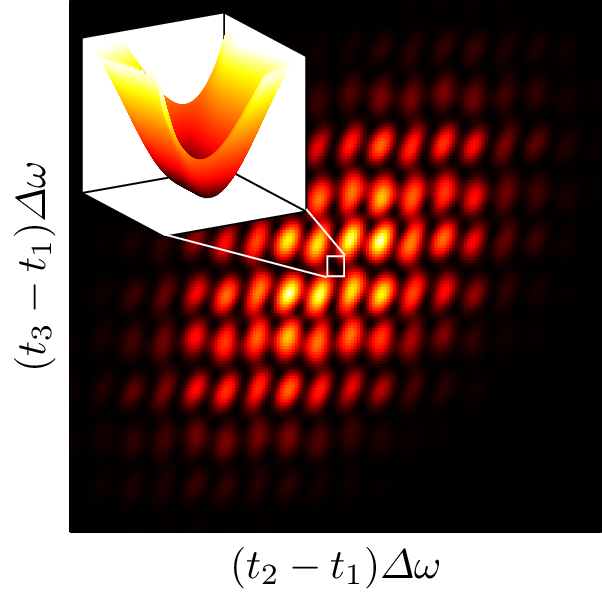Contributors
S. Laibacher, J. Seiler, V. Tamma
Collaborations
A. G. White, T. J. Weinhold, M. Rambach (University of Queensland, Brisbane, Australia)
Funding
Deutsches Zentrum für Luft- und Raumfahrt (DLR)
Quantum information is thought to lead to large advances in many areas of information technology, ranging from secure communication to efficient simulation of physical systems. Currently, the realization of proposed quantum computing schemes is still hindered by the state of the required technology. These include for example reliable implementations of logic gates or sources of multiple entangled photons.
In contrast to full-fledged quantum computation schemes, our research therefore focuses on much more elementary setups. These consist of an interferometric network into which multiple photons are injected which are subsequently detected at the exits of the network. Their implementation requires much less sophisticated components while still capturing the main cause of the power of quantum computing: the quantum interference of multiple particles.
This interference shows many interesting features such as generalizations of the famous Hong-Ou-Mandel interference effect to higher-orders. Further, the complexity of these phenomena in the context of computational complexity theory was proven using the so-called boson sampling problem by Scott Aaronson and Alex Arkhipov in 2011. These results caught the attention of the quantum computation community since they indicate that despite being significantly easier to realize experimentally, such simple interferometric setups still might allow us to prove that the computational power of quantum systems vastly exceeds that of classical computers.
In our group, we are currently investigating how robust the results of Aaronson and Arkhipov are when some of their idealizations are alleviated. For example, we analyze the change of the complexity of the boson sampling problem as the bosons becomes more and more distinguishable. Further topics of research include the influence of the chosen measurement, techniques to alleviate the effects of experimental errors, or alternatives to single-photon sources in quantum computing schemes.

Fig. 1: Quantum beats of third-order correlations at the output of a tritter (beam splitter for three beams) for three input photons with different colors.
S. Laibacher, J. Seiler, V. Tamma
A. G. White, T. J. Weinhold, M. Rambach (University of Queensland, Brisbane, Australia)
Deutsches Zentrum für Luft- und Raumfahrt (DLR)
[1] V. Tamma and S. Laibacher, Multiboson correlation interferometry with multimode thermal sources, Phys. Rev. A 90, 063836 (2014).
[2] V. Tamma and S. Laibacher, Multiboson Correlation Interferometry with Arbitrary Single-Photon Pure States, Phys. Rev. Lett. 114, 243601 (2015).
[3] S. Laibacher and V. Tamma, From the Physics to the Computational Complexity of Multiboson Correlation Interference, Phys. Rev. Lett. 115, 243605 (2015).
[4] V. Tamma and J. Seiler, Multipath correlation interference and controlled-NOT gate simulation with a thermal source, New Journal of Physics 18, 032002 (2016).